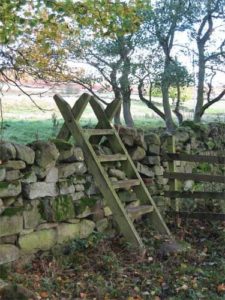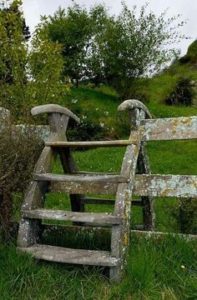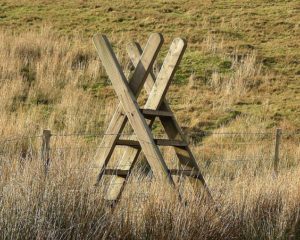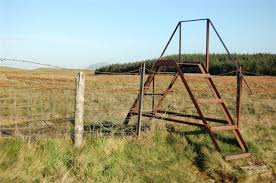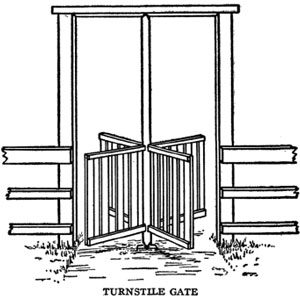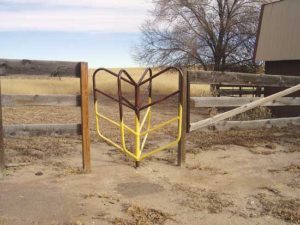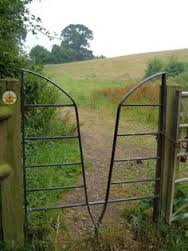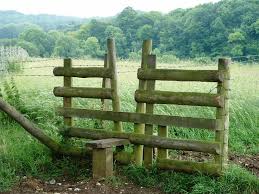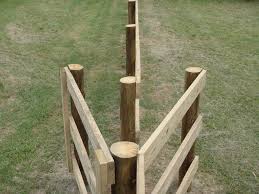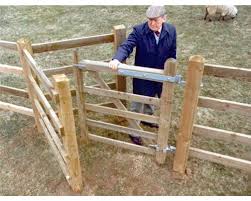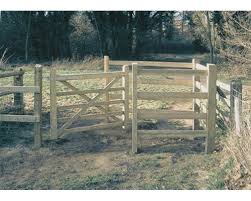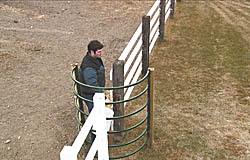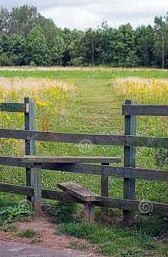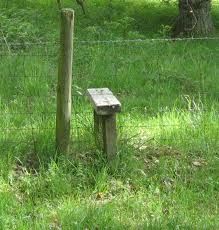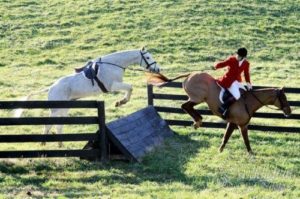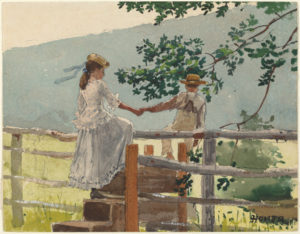By Barbara Newtown.
Farmers and ranchers have been building stiles and squeezing through gaps for as long as they’ve been putting up fences. Gates – especially gates that are big enough to let equipment through – sag and drag. And, if a gate gets used often enough, someday someone will forget to fasten the latch or chain. The stile is an attractive solution.
A stile:
Stiles can be works of art:
Or rustic:
If you can weld, try making this stile:
Stiles are fine – but what if you’re carrying buckets or a saddle or an expensive camera? A clever gap is the answer. Here is a rotary gate, also known as a turnstile:
A more modern turnstile, invented by Cloyce Hendersen:
A “squeeze” pass through:
A squeeze and stile combo:
A classic fence line gap that confuses horses and cows:
The previous design is effective with large animals. To control sheep, try this “kissing gate.” It swings on hinges and can fasten to either side:
Here’s another “kissing gate” that has more room for maneuvering a bike or cart and still prevents sheep from sneaking through:
Here is the “C Gate,” invented by Marlin Haberstroh. He sells the curved bars with attached metal brackets at fairs and at his business in Aurora, Colorado. “It’s a great way to enter or exit pens,” he says.
[photo: thecgate.com]
You don’t have to be an inventor, a master carpenter, or a welder to create a stile. Primitive solutions work well, too:
Even easier:
And, if you are a horse and your person insists that you must cross from one field to another and there’s no regular gate in sight, the best way is over a coop, which is safe and solid. The slanted shape is much easier to jump than a vertical fence. (Be careful: when horses are first learning to jump, they may convince themselves that it is wrong to cross a fence line. They may do a “dirty quit” or a gigantic leap.)
Finally, a bit of high culture. Here is “On the Stile,” by Winslow Homer.

